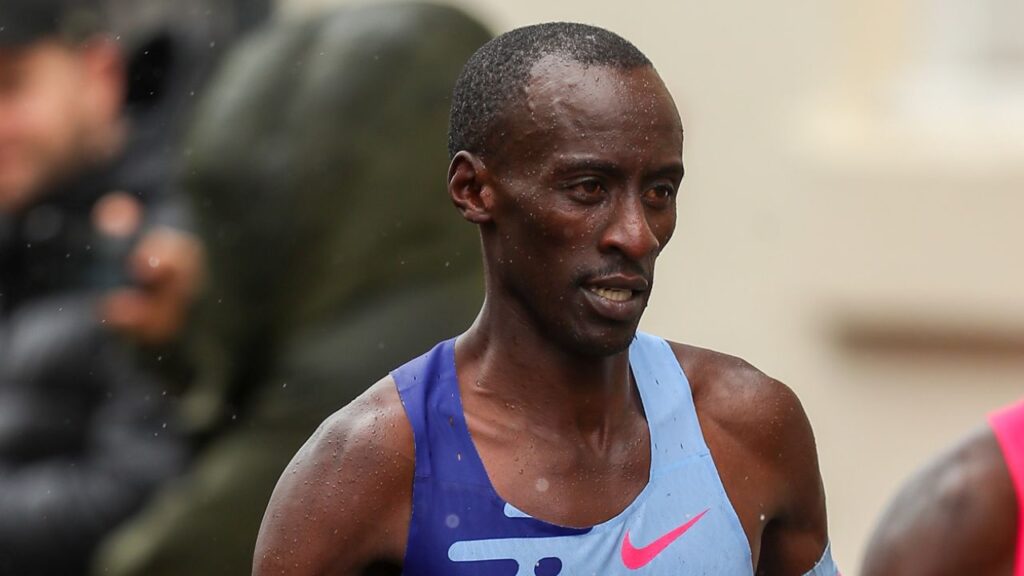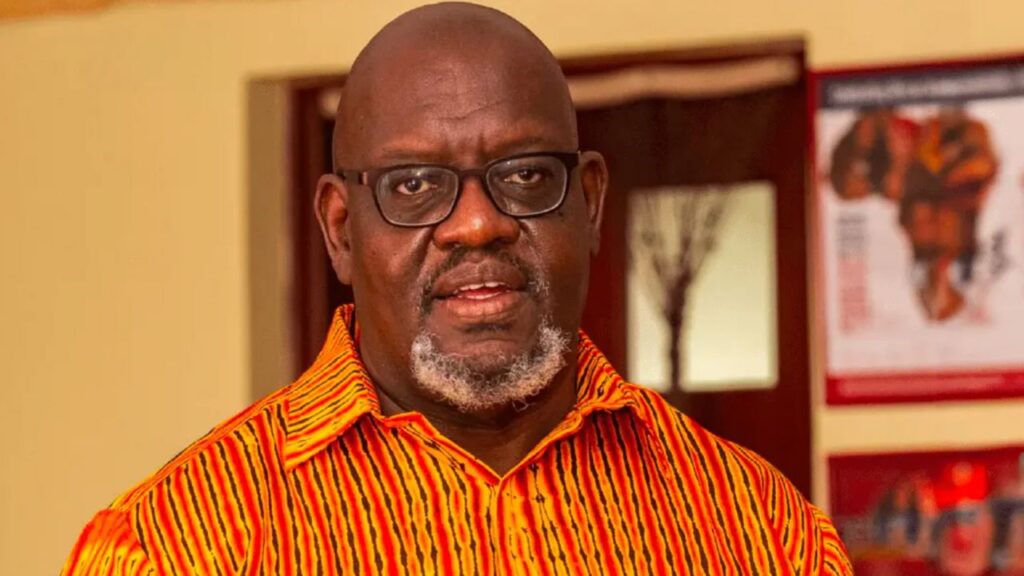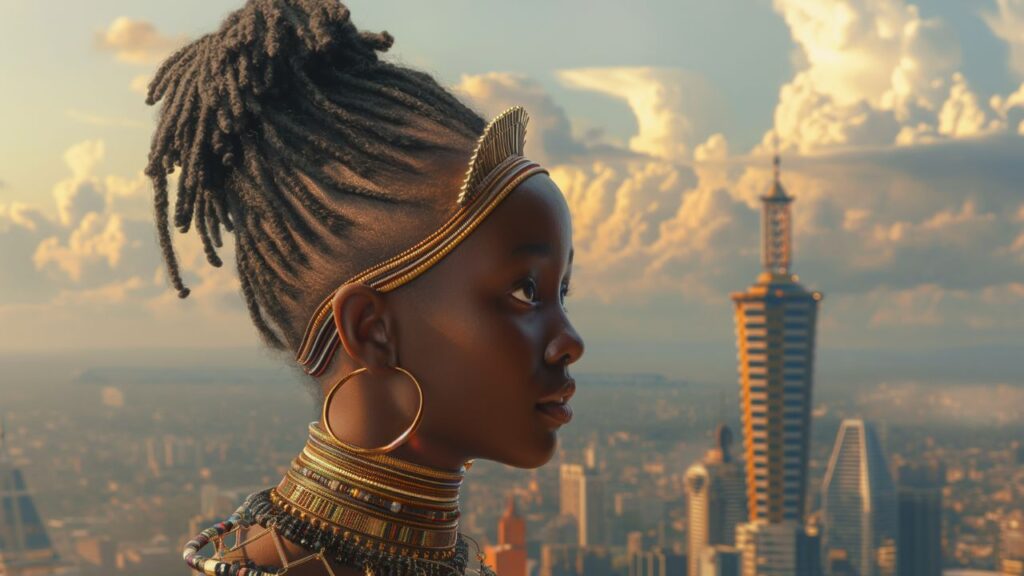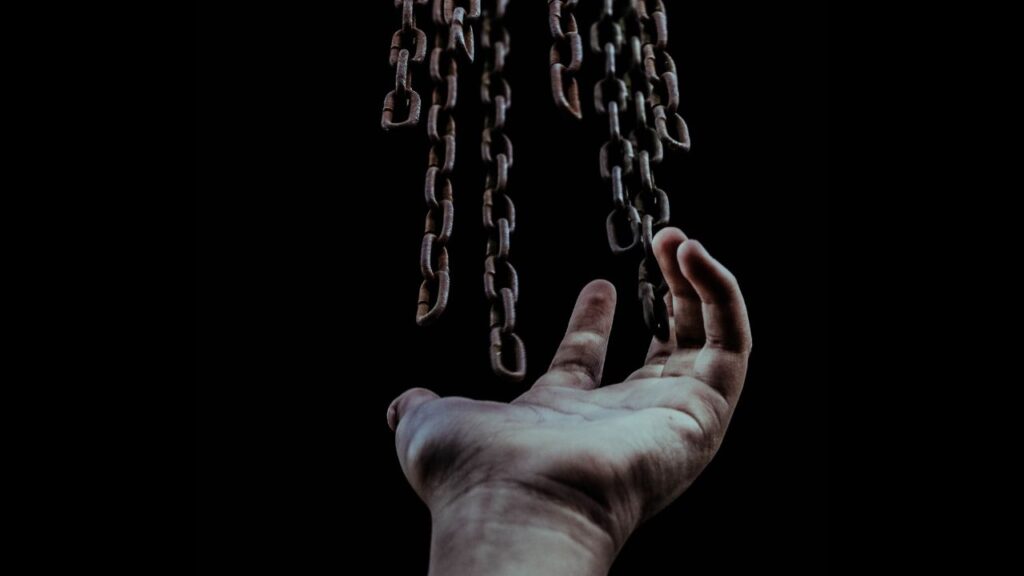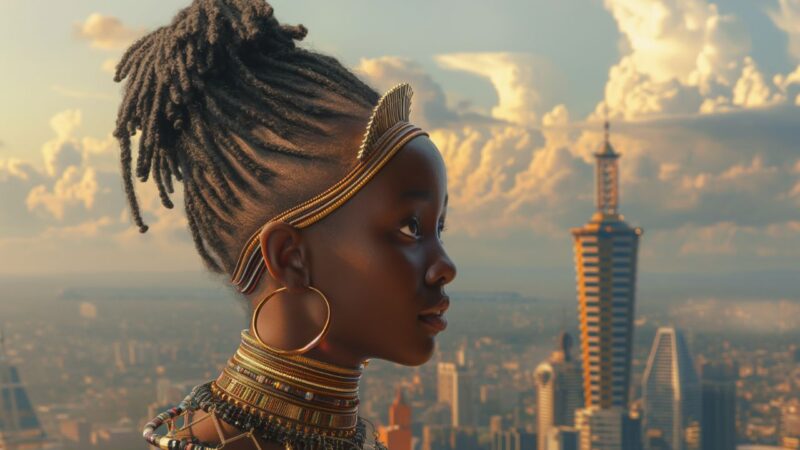On the night in August 2017 when the results of Uhuru Kenyatta’s electoral win was announced, my neighbours broke out in celebration. Red flags waved outside windows. Vuvuzelas punctuated the loud night. My father and I went to the main road to watch the spectacle. Men, women, children, it seemed even dogs and cars… everyone sang and cheered along the road. A river of bodies winding along the road chanting their gratitude to whichever deity was listening.
In the preceding weeks, I had sensed a lot of tension among my friends and various social circles. But I had told myself that it was inevitable that the incumbent would win.
“Nothing can happen. Uhuru has the numbers anyway. There’s no way he’s not winning this election,” would be my unyielding refrain in those charged political discussions.
The chorus continued like the unbroken chime of a clock.
“Tyranny of numbers.”
“Tano tena.”
“Wembe ni ule ule.”
We went to sleep with smiles on our faces. Happy that “our man”, a designed Jesus from Gatundu had won and would continue with the “great” work he was doing.
But on the “other” side of the political divide, things were not so peaceful. There was anger and disappointment. At first, I was dismissive about it. It felt like the same old song by the supporters of opposition leader Raila Odinga. How could they have been robbed when they didn’t have – at the bare bones of it – the tribal numbers?
It was practically common sense that in Kenya’s political landscape, all you need to win a presidential election is solid votes from Rift Valley, Central and half of Nairobi. And those places bled and swore red by Jubilee. Tuko Pamoja. So how could opposition supporters think that their election was “stolen”?
“Accept and move on,” came the rhetoric from “our side”.
But accept and move on to what? And the honest truth is, I was completely aware of the sins of Jubilee, and yet I had supported them and celebrated their victory. I cannot even begin to explain the disconnect here, which makes it all rather unforgivable. Why was I so quick to forgive Jubilee? Was it because I had accepted their mendacity and moved on, and now expected others to do the same? Was it because I am Kikuyu? Because I from middle class Nairobi and the status quo suits me better?
But those who refused to accept these election results endured gunfire, teargas, armed raids from the security forces, and even death, and continued to say no. Some of the victims were not even actively involved in demonstrations. Yet those on “our side” still defended Uhuruto. When I began to speak out against police brutality – the innocent victims had begun to tug at my heart – those on the “other side” called me foolish for imagining that the only crime here was police brutality. They were right – when I compiled Jubilee’s biggest transgressions before 2017, I might as well have worn a neon sign marked, “Dunce”.
In 2013, Uhuru Kenyatta and William Ruto arose like sainted phoenixes from the ashy aftermath of the post-election violence that rocked the country five years earlier. “We won” against the white man’s broad sweep of justice. “Our boys” made it out alive.
Their vision seemed clear enough. Umoja, Uchumi, Uwazi. Unity, Economy, Transparency. The President himself was a billionaire; one of the richest men in the country. There was no need to worry about corruption.
“He’s already rich. He won’t steal,” I heard it said many times. And I agreed. It seemed logical.
After 2013, Jubilee has come under fire for various issues plaguing Kenyans. In 2014, the Public Procurement Administrative Review Board nipped the laptop in 2014 project in the bud after it was discovered that the tender to supply the laptops wasn’t awarded fairly.
In 2015, the National Land Commission found that land belonging to Lang’ata Road Primary School was invaded on by the Weston Hotel, which the deputy president owns a stake in.
That same August, the Auditor General, Edward Ouko found that Sh100 million of taxpayers’ money was used by deputy president William Ruto to charter a private jet.
In October 2016, investigations found that the Health Ministry had misappropriated Sh5.2 billion. Not forgetting Chickengate, where a British national (who has jailed and has since been released) paid bribes of up to Sh50 million to Kenya National Examination Council and Interim Independent Electoral Boundaries Commission.
And of course, the catastrophe that was Eurobond. In September 2016, Standard Media reported that the Auditor General was unable to account for Sh215 billion which the government said had already been allocated to ministries.
The list goes on and on.
Jubilee’s continued its signature insistence of fixing dire issues with cosmetic solutions. The First Lady, Margaret Kenyatta, organised an annual marathon to deal with maternal health care in the country. So far, reports indicate the project hasn’t been a success.
In 2016, Ethics and Anti-Corruption Commission chairman Philip Kinisu spoke to Reuters about the issue.“The state budget is now approaching Sh2 trillion, a third of it is being wasted through corruption,” he said.
The Elephant itself has a very helpful guide pinpointing each and every major corruption scandal from 2013 to 2018.
By election time, we were monikered Uthamakistan, due to our relentlessness in calling Uhuru the chosen one. We lined up on that cold August morning believing that somehow the plunder would stop if we gave the “dynamic duo” a second term. Party primaries a few weeks prior had been chaotic, but we told ourselves that the “bad eggs” had been eliminated – it would get better.
It didn’t. Just after the announcement of the victory, Raila’s camp went to court to contest the victory. The ruling declared Uhuru’s win invalid. We were ordered back to the ballot on October 26th. The opposition wasn’t having it. They wanted complete electoral reform.
We rose up again less vocally this time, “Kwani you want a constitutional crisis?”
The most moderate of the uthamakistanis made a hollow concession that yes, the electoral process had been a mess. “Accept and move on,” they still said, before quickly adding, “but we understand where you’re coming from. IEBC really handled that poorly.”
After the October election, an eerie calm settled over the city. Things were either about to get a lot worse or marginally worse. They got worse. For a while, it became scary just to go out.
One Friday afternoon while I was at work, protests broke out in Kawangware 56, which is on my route home. A friend who was the same route called me to warn me off.
“Don’t use that route. Go to town or Westlands. There is chaos huku.”
“What is happening?” I asked, panic rising.
Street gangs from opposing camps had split the area in two, he said, and woe to you if you were caught on the wrong side.“Ukiwa hii side unaulizwa kama ulipiga kura. Na kama ulipiga wanakuchapa. Alafu ukienda terminus wanaangalia kama una rangi kwa kidole na kama hauna wanakuchapa.” (If you’re on this side, they ask you if you voted, and if you did they beat you up. And if you’re on the other side of the bus terminus, if they don’t see you voted by the ink on your finger, they beat you up.)
My friend told me he escaped any chaos because he had no ink and he is multilingual. No accent to betray him. No “special” features. Others didn’t fare so well.
Reports say that at least 10 people had died in Kawangware that day. Social media was inundated with messages demanding the local leaders to go cool the storming hotbed of violence. The last thing the country needed was more bloodshed. The violence lasted four days with the real number of victims remaining a mystery.
After 2017, I woke up and smelled the dead roses. However late, it happened. There wasn’t a particularly triggering event. But a subconscious harboring of anger and resentment that simply overflowed. I don’t yet know how to make peace with the fact that I had a hand in legitimising probably the worst administration this country has had the misfortune of enduring. I will never deserve that peace.
Shamefully, I recalled a correspondence I had with a friend during the 2017 election, when I exposed myself as a Jubilee supporter.
“Why are you voting for Uhuru?” he asked me.
I shrugged, and said the rote answers, “Let him finish his work. It’s difficult to beat the incumbent anyway. Raila isn’t a better option. Better the devil you know. ODM is so disorganised. There is no way they can lead this country to prosperity. At least Jubilee have done some development.”
“But he has had the most corruption scandals since Moi.”
“It’s not him, it’s the people around him.”
“But China…”
“Our debts to China won’t be repaid now. They’ll be repaid later.”
“But inflation…”
“That’s just the usual progression of an economy.”
“High cost of living, squandering government money, lower job security…”
“Aii kwani you want to vote for Raila?”
Then one day, the cognitive dissonance became impossible to bear. It all slammed into me like a truck with no brakes. How could I keep up this charade? How was I still capable of defending him? The administration had been rogue all along.
Last December, a video surfaced on Twitter in December 2018 tagged “Business Community Speaks”. A woman spoke to the camera, her voice betraying the anger and frustration most Kenyans felt.
“Tuna amka tunaskia mafuta imepandishwa,” she lamented, “Na tuli amka asubuhi kuchaguana… Nina mtoto mdogo nilimwacha kwa nyumbandio nikachague president… mwenye anaweza kututetea. Na saa hii hawajuisisi tunaelekea wapi.” (I heard this morning that fuel has become more expensive, yet we woke up early to vote. I left my baby in the house that day to vote for the president, someone who can defend us. But now, I don’t know what’s going to happen to us).
Thus far, a lot of the government’s actions have brought swift abandonment from their more resolute supporters. And the issues have been there all along, and they continue to intensify – hunger, extrajudicial killings, a failing healthcare system, a coal project in complete disregard to the environment, increased reports of femicide, and most recently, punishing whistleblowers. And we cannot call it corruption any more, as if the looting is an unfortunate outcome of an otherwise benign system – the plunder is the entire point. It is state capture.
I have no clue how any of this will be solved.
I wonder about an electoral boycott in 2022. Algeria has gone radical and conducted massive demonstrations forcing their president Abdelaziz Bouteflika to abandon his plans to run for a fifth term. Their transition won’t be easy. A caretaker government has been appointed to oversee the country until the next presidential election. Algerians want a clean slate. The military may have helped push for the resignation of their former leader but what role will they play in ensuring the protesters get what they were fighting for? It is still uncertain.
Sudan also held protests for months to oust Bashir and ensure a transition of power conducted by civilians rather than the military.
So, what if not voting is the answer? What if, instead of going to queue to vote for fresh faces that make the same non-deliveries, Kenyans just didn’t show up to vote?
I ran this idea by a friend but he disagreed.
“Political parties are the ones with power. If you want to make change, you’d be better off showing up in droves to vote for the person you chose. You can vet the candidates during the primaries. And then make sure the best candidate is representing you.”
The idea of boycotts isn’t new. They have been used by civilians to show displeasure at the practices of those in power. Understandably, this may also have the added effect of enabling the status quo. Let’s call it a last resort; a drastic measure to be taken when there are no viable candidates to rally behind. Then again, the Montgomery Bus Boycott in 1955 was seminal event in the Civil Rights Movement in the US. The Anti-Apartheid Movement which led to boycotts of South Africa helped abolish apartheid in 1994.
The Kenyan constitution currently doesn’t have any provisions for extremely low voter turnout. But if people refused to show up, it would send an undeniable message. Thy will is not being done. There would be no added leverage of legitimacy. At the very least, it would establish a kind of controlled anarchy that would display an unwillingness to be taken for fools. While this may not provide an instant avenue to rebuilding a structure that is more acceptable to Kenyans, it may lay the groundwork to foster desired change.
With no visible grassroots organisation, an intrinsic fear for our lives and our livelihoods, perhaps the best solution at the moment, is not a nationwide gathering but a disappearance, one that won’t have consequences on jobs and lives. On that day of the vote, nobody goes.
There seems to be an unspoken truth that Kenyans are waiting for a “trigger”. The sayings punda amechoka (The donkey is exhausted) and Kenyans are tired keep being thrown around, to the point of becoming clichés. There is a simmering belief that at the right moment, the people will rise up and disenfranchise the hold Jubilee has over the people.
Still, going by the Huduma Number exercise, Kenyans are not keen on defying the government and they queued for hours to comply with the government directives. If a simple act of civil disobedience can’t be agreed upon, how can a revolution based on unified rebellion ever work?


